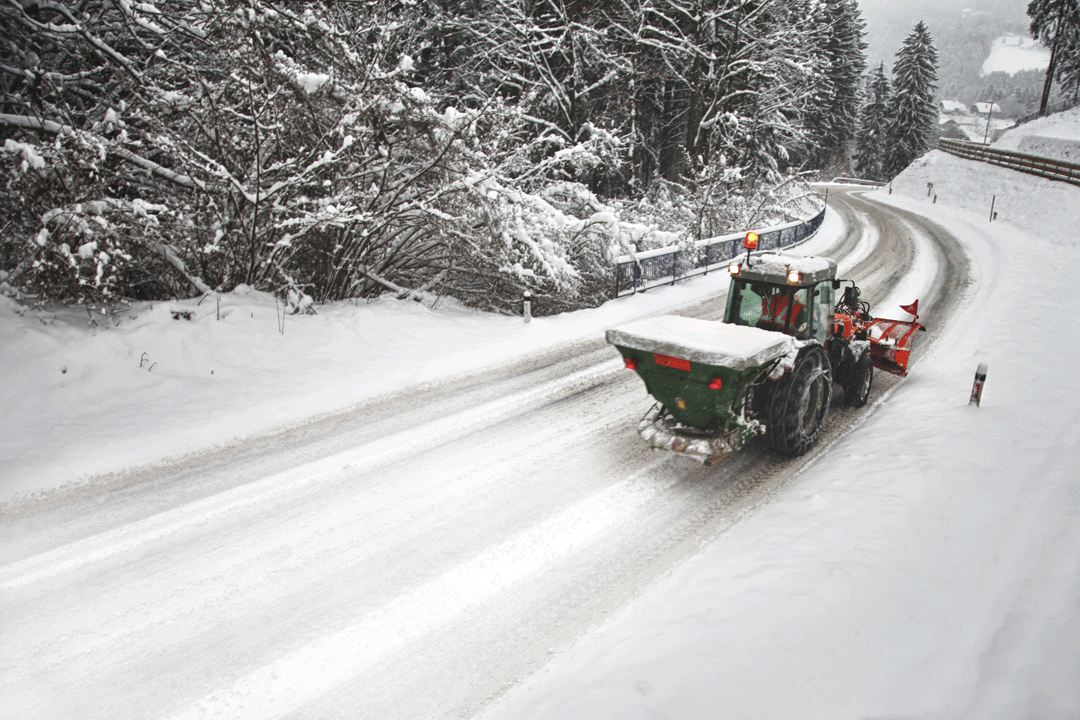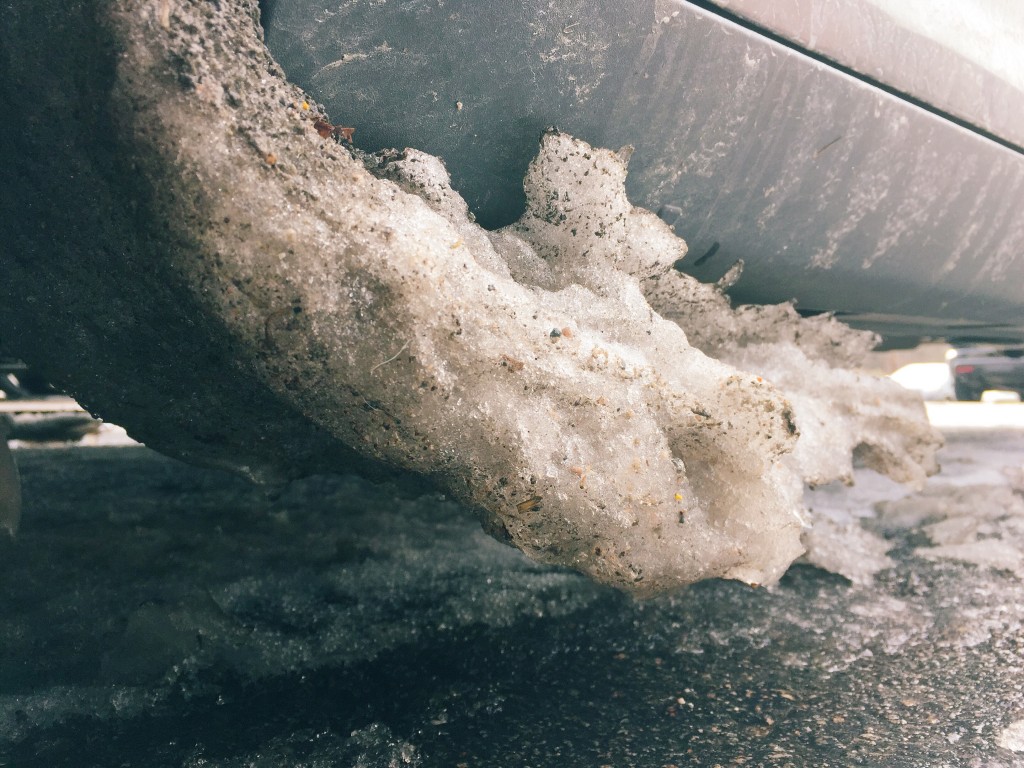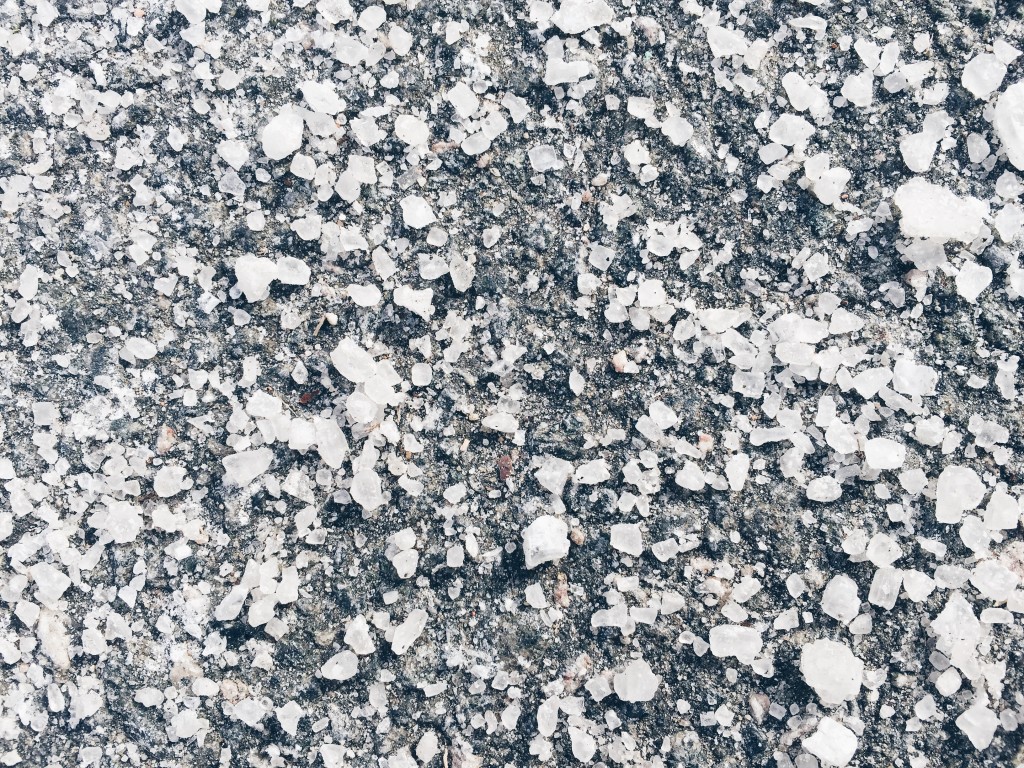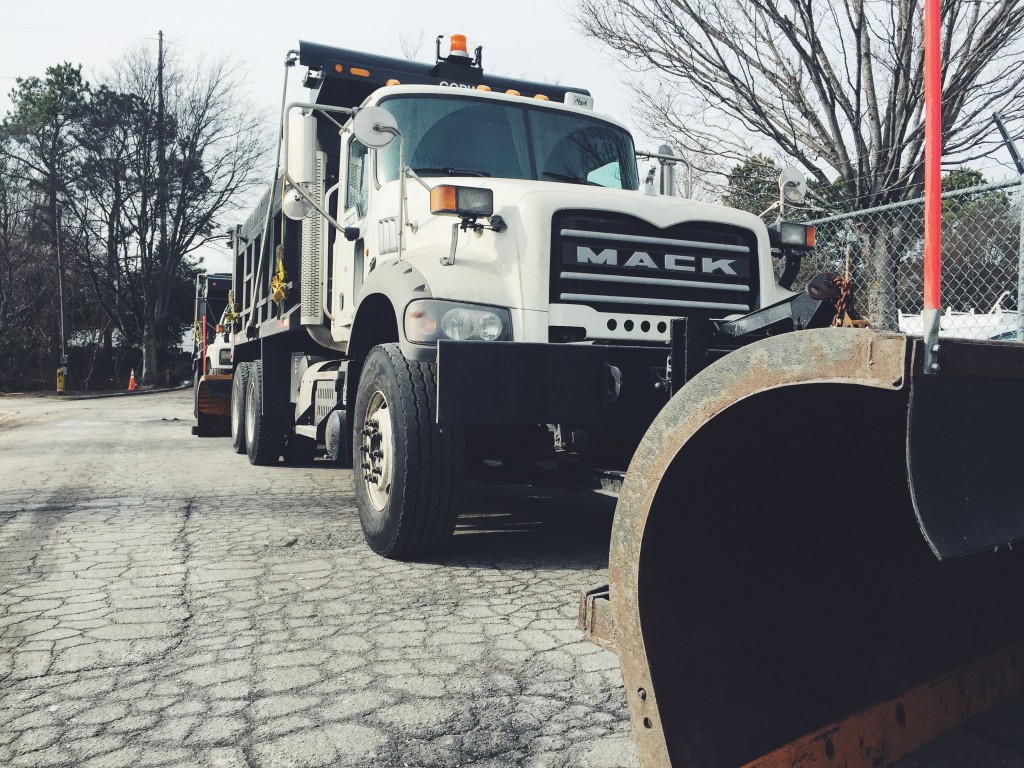The Rust Belt got its name from the large concentration of industry in those states, with much of that concentration related to metalwork and manufacturing. Notoriously severe winters may also have contributed to the name, as the region is a pioneer of using salt and brine to de-ice roads.
Salt lowers the freezing-point of water and is therefore an effective means of keeping roads free of ice and slush, much more so than, say, a flamethrower or a microwave mounted to the front of your car. However, the residue left behind can hasten corrosion of all the vital bits of your car, namely the brakes, body, and undergirding. During the winter, it’s important to protect your car from road salt and corrosion, and we’re going to outline some steps you can take toward doing so.
Step One: Know What You’re Dealing With
You might look at the white residue that gets splashed up on your car and think that came from rock salt, but there’s a far more pressing culprit. It was determined a while ago that regular salt littered on the road would just bounce off onto the shoulder, where it can’t do its job (kind of like you if you’re stuck at home without internet or power).

Instead, states have started using salt brine to pre-treat roads. The North Carolina Department of Transportation (NCDOT) uses a mixture that is twenty-three percent salt and uses special application trucks to douse roads in advance of a storm. You can learn more about the DOT’s salinization practices on the official website.
In addition to being more effective at combating ice, brine is also more economical. It costs the state fifteen cents to manufacture a gallon of salt brine, and only six dollars to pre-treat one lane mile. It would cost almost fifteen dollars to cover that same lane mile in rock salt after a storm.
Step Two: Wax On…
So salt brine is our first line of defense against icy roads, but it is also way worse for your car, even more than rock salt. Take a cue from the NCDOT: prevention is better than reaction. You should give your car a good waxing in advance of the winter season. This way you’ve got a layer of protection between your vehicle and all that harmful NaCl.
Step Three: Wash Off
Even with a good coat of wax, you’ll still want to wash your car regularly. The worst thing about North Carolina winters is that they’re inconsistent, but the best thing about them is that they’re inconsistent. That means that for every week of frigid cold, there’s probably a week or more between of mild “meh, I don’t even need a coat today” weather. This is the perfect opportunity to bust out your favorite sponge and garden hose to give your car the bath it needs.
Some additional tips:
- Start with the highest pressure nozzle setting and spray from top to bottom, blasting the salt off your car
- Get down and really scrub out your wheels and wheel wells, where brine residue loves to hide
- Don’t use dish soap, as it will strip the wax you worked so hard to apply in advance
- If you run into particularly stubborn salt stains, you can add some baking soda to your rinsing solution for some extra oomph
- Take the time to dry your car after washing it, then apply more wax
Step Four: Protect Your Undercarriage
Unfortunately, the easiest parts of your car to clean and protect are also the least susceptible to real harm from corrosion. The tough part is getting underneath your car, where most of the brine and slush splashes up into crevices and gets stuck. Unless you have a lift in your garage (let’s be real), you’re going to need help with this. There are car washes that offer steam cleaning and undercarriage care, or you can bring it to our dealership for a full detailing and treatment.
Step Five: Don’t Forget Your Carpet
With all the salt and brine sloshing around on the road and getting sprayed up onto your car by everyone that passes, you’re probably thinking “Well at least I don’t have to worry about the inside of my car rusting.” True, corrosion won’t really affect anything in there, but the salt can still damage your carpet. Even if you kick the snow clumps off your boots, there will still be enough salt on them to seep into and stain the floors.
The best solution here would be to pick up some all-weather floor mats, you know, the heavy-duty rubber kind. If you’re already looking at some stains, here’s a quick and easy removal method.
- Mix up a solution of half warm water, half white vinegar
- Use a spray bottle on the stained carpet, or pour some if you don’t have access to a spray bottle
- Scrub gently to bring the salt to the surface (If you scrub too hard, you’ll only bury it further)
- Use a towel to absorb the salt, laying it over the stain and pressing down
- Repeat as necessary until the stain is gone
If you don’t see immediate results, try it again. Salt stains are stubborn, but they aren’t permanent.
Step Six: The Dealership Difference
If you need help with any of the above, our service and parts department is here to help you prepare for anything. We’ll be one of the last places to close in winter weather, so you can count on our staff to get your car the treatment it needs. Those all-weather floor mats you’ve heard so much about? We’ve got them. That undercarriage treatment you need? We can do it. Think your car is already suffering from some corrosive damage? We’ll fix it. Please don’t hesitate to call or visit us if you need assistance.
We hope this post is helpful to you and your friends. If you like our advice, share it with others so that everyone can keep their cars in the best condition.





Comments are closed.